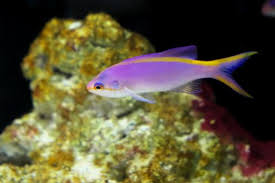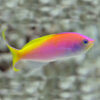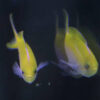Exploring the Connection Between Dragons and Water Elements in Chinese Culture

Dragons hold a place of profound reverence in Chinese culture, symbolizing power, authority, and harmony with nature. Among the most intriguing aspects of the dragon’s role in Chinese traditions is its strong association with water, an element deeply embedded in both mythological and practical elements of Chinese civilization. This connection not only reflects the dragon’s mythical abilities to control water but also highlights the broader cultural belief in the interdependence between the natural world and human existence.
In this article, we explore the fascinating relationship between dragons and water in Chinese culture, and how this connection manifests in art, mythology, philosophy, and even daily life.
The Dragon as the Controller of Water
In Chinese mythology, the dragon is often seen as a powerful and divine creature with the ability to control natural elements, particularly water. Dragons are believed to live in bodies of water such as rivers, lakes, and seas, and their influence extends to bringing rain and maintaining the balance of water sources across the land. This mystical power over water has given the dragon a central role in agricultural societies, where rainfall and water supply are crucial for crop production.
The “dragon’s gate” myth, for example, tells of a carp that transforms into a dragon after leaping over the Dragon Gate waterfall, symbolizing strength, transformation, and the potential to harness water’s power for positive change. This legend reinforces the idea that dragons are not only creatures of water but are also the masters of rain and water-related phenomena, playing an essential role in ensuring a prosperous environment for the people.
Dragons and Rainmaking Ceremonies
In ancient China, the dragon was directly linked to rainmaking ceremonies, a vital tradition for agricultural societies. The Chinese people believed that by honoring the dragon, they could invoke its blessings for rainfall. These ceremonies, often performed during times of drought, would include offerings, prayers, and dragon-themed dances. Dragons were depicted in various forms, such as dragon-shaped kites and intricate carvings on ritual objects.
During these ceremonies, dragon dances were an essential component of the celebration, where performers would imitate the flowing and undulating movements of a dragon, symbolizing its interaction with water and its ability to bring rain. This connection to water was not only spiritual but also practical, as farmers and communities relied on the dragon’s perceived powers to ensure the success of their crops and the health of their land.
The Dragon and Water in Chinese Art
The symbolic connection between dragons and water is vividly illustrated in Chinese art. In traditional Chinese painting, the dragon is often portrayed as swimming through waves or coiling around water features, reflecting its dominance and intimate connection with the water element. These representations are not merely decorative but serve as a reminder of the dragon’s role in maintaining balance in nature.
Additionally, ancient Chinese ceramics frequently feature dragon motifs, especially on water-related items like vases and fountains. The dragon is depicted swirling around bodies of water, emphasizing its importance in maintaining the flow of life. These artistic expressions reveal the enduring cultural belief that the dragon’s relationship with water is foundational to understanding the natural world.
Feng Shui and the Dragon’s Water Element
In Feng Shui, the ancient Chinese practice of arranging the environment to promote harmony and prosperity, the dragon is associated with the “water dragon” concept. Water dragons in Feng Shui represent the flow of positive energy, wealth, and good fortune. The strategic placement of water features—such as fountains, ponds, or aquariums—is believed to enhance the flow of Chi (vital energy) and invite the dragon’s auspicious influence into the home or workplace.
Water elements in Feng Shui are considered powerful tools for attracting prosperity and success, particularly when combined with the dragon symbol. The placement of a dragon figurine near a water feature is said to enhance the flow of wealth and blessings, making it a popular practice in many households and businesses. The connection between water and dragons in Feng Shui also highlights the importance of water in sustaining and enhancing life force, prosperity, and good fortune.
Dragons and Water in Chinese Architecture
The connection between dragons and water is also evident in Chinese architecture. Traditional Chinese gardens, often built around palaces and temples, feature water elements such as ponds, rivers, and streams, with dragon motifs integrated into the design. These water elements are not only aesthetic but serve to symbolize the dragon’s life-giving powers, bringing serenity, abundance, and good fortune to the surroundings.
In ancient Chinese imperial palaces, the dragon was frequently depicted in relation to water features. For instance, in the Forbidden City in Beijing, dragon motifs can be seen adorning the roofs of buildings that are strategically aligned with water sources like rivers or lakes. The design of the Forbidden City emphasizes the connection between the dragon, water, and imperial power, reinforcing the idea that the ruler, like the dragon, had mastery over the natural elements and the country’s prosperity.
The Dragon in Water-Related Festivals
Chinese festivals also honor the relationship between dragons and water, particularly in events such as the Dragon Boat Festival. Held annually on the fifth day of the fifth lunar month, the Dragon Boat Festival celebrates the dragon’s power over water through thrilling boat races. During the festival, teams of rowers compete in long, narrow boats decorated with dragon heads, racing to the beat of drums to the sound of cheering crowds. The race is a symbolic reenactment of the ancient story of Qu Yuan, a poet and statesman, and is rooted in the belief that the dragon’s presence in the water can protect and bring prosperity.
The festival’s strong association with water is also reflected in the consumption of zongzi, sticky rice wrapped in bamboo leaves, which are traditionally offered to the dragon as a sign of respect. These water-based activities, both symbolic and celebratory, emphasize the close relationship between the dragon and water as vital sources of life and protection.
Conclusion
The connection between dragons and water in Chinese culture is multifaceted, blending mythology, art, philosophy, and practical traditions. Dragons, as the controllers of water, symbolize power, fertility, and balance with nature. From ancient rainmaking rituals to modern-day Feng Shui practices, water is seen as both a vital life source and a force that is best controlled and harnessed by the dragon.
This enduring relationship between dragons and water illustrates the deep-rooted cultural beliefs that water, as an essential element, is both a blessing and a force that requires careful stewardship. Through artistic depictions, architectural designs, and festival celebrations, the dragon continues to be an iconic figure that exemplifies the harmony between humanity and the natural world in Chinese tradition.

